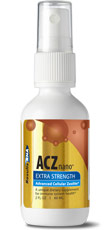The Environment and Your Child: How to Keep Toxins Away
![]() As new parents, my husband and I used to wake several times each night to check on our peacefully sleeping baby. Even if we overdo the worrying sometimes, parents try to provide a safe, healthy environment because we know that babies and children are vulnerable.
As new parents, my husband and I used to wake several times each night to check on our peacefully sleeping baby. Even if we overdo the worrying sometimes, parents try to provide a safe, healthy environment because we know that babies and children are vulnerable.
The good news is that government and the mainstream medical profession are agreeing that children need extra protection from hazardous chemicals. Largely because they're rapidly growing, babies, children and adolescents are more vulnerable to toxins than the rest of us (see box, right). "Children are not small adults," says Philip J. Landrigan, M.D., M.Sc., director of the Center for Children's Health and the Environment at the Mount Sinai School of Medicine in New York. At the urging of Dr. Landrigan and many others, government has begun to put special environmental protections for children in place.
The movement to protect children from environmental hazards began with reports on children's vulnerability by the Natural Resources Defense Council (1989) and the National Academy of Sciences (1993). A major victory was the banning of Alar, a carcinogenic pesticide used on apples. Since 1989, parents nationwide have joined campaigns against pesticides in children's food and other toxins in consumer products.
 To educate doctors, the American Academy of Pediatricians (AAP) has just published a Handbook of Pediatric Environmental Health, free to all pediatricians. "Now, when parents ask, pediatricians can turn to this handy reference book about pesticides, other industrial chemicals, or air pollution," says Ruth Etzel, M.D., Ph.D., an editor of the book and chair of the AAP's Committee on Environmental Health.
To educate doctors, the American Academy of Pediatricians (AAP) has just published a Handbook of Pediatric Environmental Health, free to all pediatricians. "Now, when parents ask, pediatricians can turn to this handy reference book about pesticides, other industrial chemicals, or air pollution," says Ruth Etzel, M.D., Ph.D., an editor of the book and chair of the AAP's Committee on Environmental Health.
At the policy level, the Food Quality Protection Act (FQPA), which focuses on reducing children's risks, is about to be actively enforced. Two new laws, a Children's Environmental Protection Act and School Environment Protection Act, have been proposed. "We're witnessing the coming of age of the children's environmental health field," Dr. Landrigan says.
It's high time. Environmentally-linked health problems, like asthma (in 7% of American children) to learning and attention disorders (up to 17%), are on the rise. Many children are being exposed to unsafe levels of pesticides in residues on food. Common household chemicals have been linked to behavior and learning disabilities in In Harm's Way, a new report by Greater Boston Physicians for Social Responsibility. Over 80% of Americans, including children, have evidence of one or more nerve-damaging pesticides in their bodies. What's most striking is the small amounts that can cause harm to the developing fetus. Children's cancer is on the rise.
In a hopeful trend, researchers are both pushing for solutions and educating parents on how to avoid harmful exposures. At the Center for Children's Environmental Health at Columbia University, Frederica Perera, Dr. P.H., leads a study taking urine, umbilical cord blood and air samples from pregnant women to measure their children's exposures in the womb. The children are being followed for several years. "Preliminary tests show that 100% of the air samples contained pesticides capable of harming developing nervous systems, like Dursban, and at least one cancer-causing element of tobacco smoke," Dr. Perera says. The study also looks at how babies might become sensitized, in the womb, to allergens their mothers breathe in the air at home. Dr. Perera is studying possible links between allergic sensitization and the onset of asthma; 75% percent of asthmatics have allergies.
At Mount Sinai, researcher Luz Claudio, M.D., is studying whether pesticide use in homes may be linked to asthma in children. Both the Columbia and Mount Sinai studies involve going into homes and teaching residents non-toxic means of pest control.
Education and outreach are crucial. For example, despite the banning of lead in gasoline and paint twenty years ago, 27% of inner-city minority children have blood lead levels above the safety threshold, as compared with 2% of suburban middle-class children. "Old lead paint remains the main culprit. And lead accumulates in the bones as children grow," says Herbert Needleman, M.D., a pediatric psychiatrist at the University of Pittsburgh Medical School.
Finally, good old-fashioned parental worry can be channeled into powerful, positive action. As parents, our daily consumer choices of greener, less-toxic products, along with our letters and phone calls, send a powerful message to manufacturers, retailers, government representatives and pediatricians. As Dr. Etzel says, "Parents are the ones who change the world. We're listening to you."

